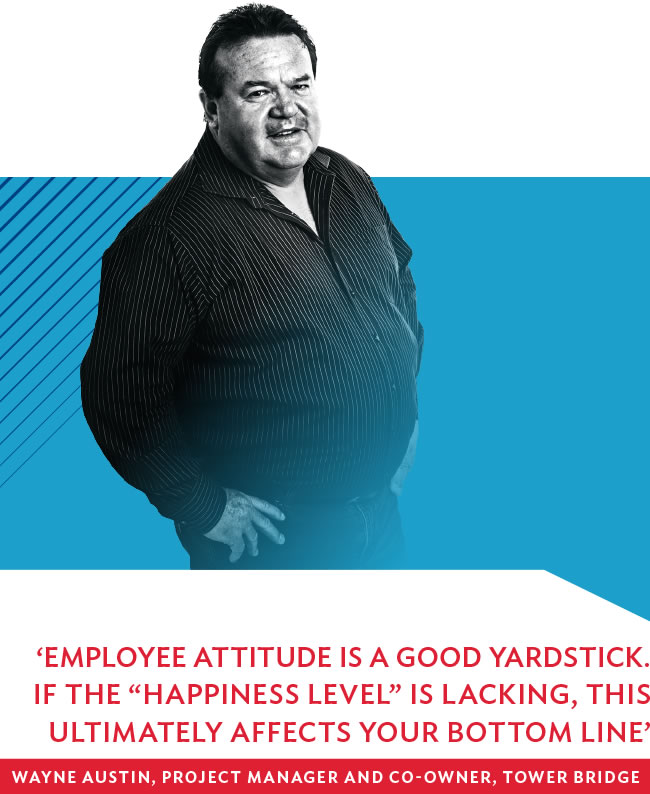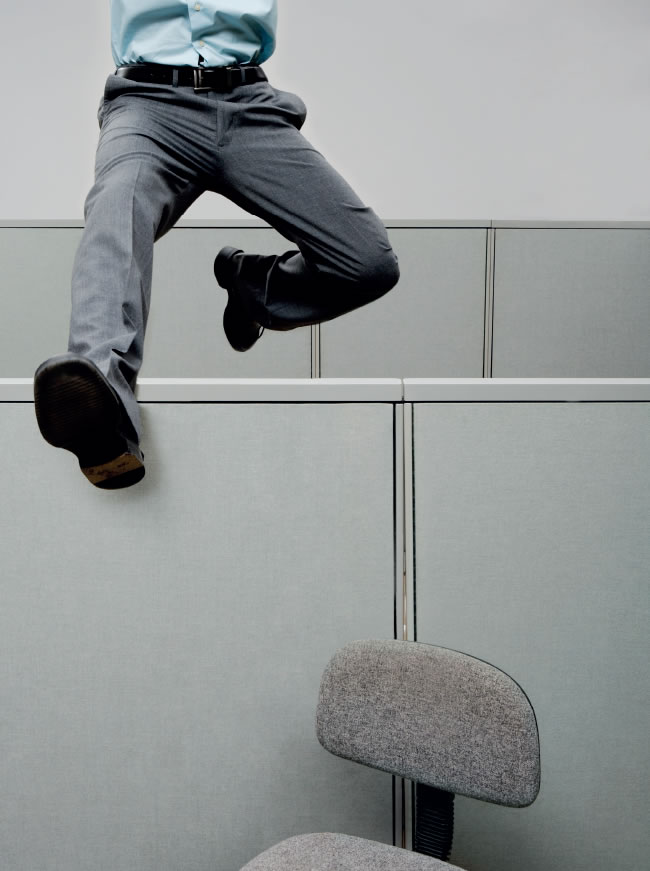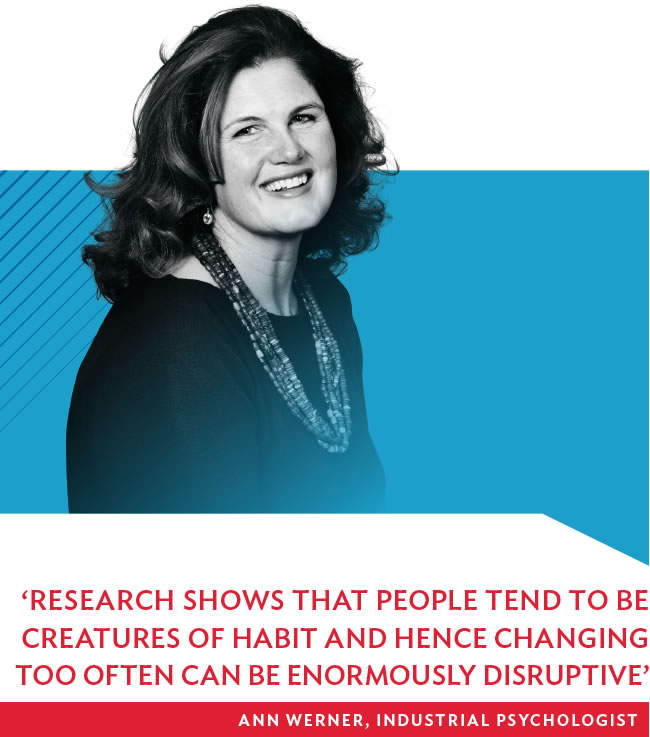There’s a Dilbert cartoon that goes something along the lines of this…
Pointy-haired Boss: ‘Productivity went down when we moved the engineers from private offices to cubicles… Productivity went down again when we tried the open-office plan.’
CEO: ‘Have we tried putting all of them in one clown car?’
Pointy-haired Boss: ‘No, but I don’t see why that wouldn’t work…’
Joking aside, there’s a reason why open-plan offices are sometimes perceived as a naked attempt at cost cutting by employers at the expense of employees that borders on the absurd. It’s synonymous with irritation and frustration – if you have ever worked in an open-plan office (and that’s most of us these days), you’ll no doubt know what it’s like to be seated next to a ‘talker’ who feels it’s their duty to broadcast every irrelevant thought that crosses their mind, or under an air vent that blasts arctic air all day, every day.
Okay, so perhaps that’s a bit melodramatic but it does illustrate the impact office environment can have on the everyday experience of work – in particular, where you sit, next to whom you sit and what your overall perception of your environment is. After all, most of us spend more time at work interacting with colleagues than we do with our loved ones.
In general, the research doesn’t paint a pretty picture. Open-plan office workers get sick more often; they are interrupted more regularly and find it harder to concentrate; there is evidence to suggest that they are less productive; and lack of privacy can reduce creativity and increase stress.
There’s no denying that the potential for gripes, distraction and tension is magnified in an open-plan environment, but that doesn’t mean there aren’t significant perks to this arrangement – for workers as well as a company’s bottom line.
Apart from the economic benefits of smaller premises and shared resources, open-plan offices are (theoretically) more transparent and egalitarian. They can also encourage communication, the exchange of ideas, cohesiveness and collaboration.
Since we’re not likely to see a departure from the open-plan model any time soon, it is in employers’ interests (and those of human decency, one might argue) to pay special attention to the factors that can make or break this kind of work arrangement, particularly since a recent Oxford Economics study noted a distinct disparity in perceptions between management and workers in terms of open-plan office satisfaction. The global survey found that 53% of non-executive employees felt less satisfied and productive when they had to work through ambient noise, while just 35% of executives felt the same way. So how do you know if your open-plan office is working?
‘Productivity or lack thereof would be a profound indicator,’ says Wayne Austin, project manager and co-owner of workspace design agency Tower Bridge. ‘In addition, employee attitude is a good yardstick. If the “happiness level” is lacking, this ultimately affects your bottom line.’
It may sound obvious but it’s worth mentioning that careful consideration needs to be given to basic comfort and hygiene factors such as desk size and spacing (you don’t want workers to feel like battery chickens); thermal comfort (no one wants to sit under an air vent); air quality (fresh air needs to be circulated); lighting (screen glare from overhead lights is a no-no); sanitation (cleaning carpets to reduce allergens); and ergonomically sound seating. Exposure to natural light is also a mood booster that should not be underestimated.
Should a few or all of these requirements be ignored, this could lead to the development of what is commonly referred to as ‘sick building syndrome’.
Sensory intelligence guru Annemarie Lombard – whose consulting firm measures the ‘sensory thresholds’ of workers to help optimise their workspace and reduce stress – takes it a step further.
‘We do sensory audits to pinpoint 50 factors that employers should be considering when designing workspace, from the collective space – acoustics, temperature, lighting, density, plants, design – to individual desk space – chairs, PCs, table size, storage – to wellness factors – cafeterias, flexitime, training, coaching, wellness initiatives. It all counts towards the overall sensory experience of the environment.’

The conventional wisdom is to seat those whose functions are most closely linked in small groups or ‘pods’ (in other words, by department) in an open-plan environment. It’s both obvious and effective. Some firms, however, are mixing things up a bit.
Take New York advertising firm MODCo Media, for instance. It has experimented with three different seating plans over as many years – for example, seating its media buyers next to its accountants. This resulted in a sort of osmosis whereby some of the media buyers absorbed the skills of the accountants. Consequently, many of the latter became redundant, in turn saving the company a few hundred thousand dollars a year.
Should your company try it? ‘This isn’t a great idea in our South African market,’ says Monique Moreira, head of design at Tower Bridge. ‘On the whole, South Africans are social creatures, and we enjoy interaction. However, we also like to take ownership of a personalised space.
‘Musical chairs can be very disruptive. Hot desking, on the other hand, can work for temps as locking down a particular space for a particular workforce may not be a key requirement. So shifting desks would not be too unsettling for this group.’
Industrial psychologist Ann Werner is slightly more speculative. ‘Shifting things around a bit could work, so that the “nicer” desk positions are rotated. However, research also shows that people tend to be creatures of habit and hence changing too often can be enormously disruptive. And most prefer going to their own place each day – as long, of course, as they’re happy with it in the first place.’ Open-plan offices do increase engagement between staff but, by the same token, this increases distractions too, Lombard argues. ‘The key is to balance the collaboration and distraction components. Some people have high sensory thresholds – about 20% of the population – and actually enjoy the busyness of such spaces. But others with a low threshold – also around 20% of the population – find it extremely stressful and struggle to get things done.
‘Distractions don’t necessarily make people do less work but they do make more mistakes and are more tired at the end of the day.’
This could mean devising a seating plan that not only takes the role of the employee into account but also whether they are an introvert or extrovert.
Placing an introvert who prefers privacy and minimal interruptions in a corner – perhaps with one side being a wall or a window – would be a better choice than next to the water cooler or photocopier, where there is constant traffic, says Werner. ‘Similarly, those who have a high threshold for noise can be placed where noise might not bother them, such as near the reception area, kitchen or loos. Extroverts may also thrive in the heart of the room, as they may in fact find it distracting to have too little contact with others.’
Even extroverts, however, can suffer from the lack of privacy that comes with open-plan offices, and research suggests that this can impact on workers’ creativity – they behave less spontaneously and naturally than they would if there was no one around to see them, and they also take less time to ‘zone out’ and recharge (essential for preventing burnout) by, for instance, playing a game on their phone, for fear that they will be perceived as lazy or slacking off.
Happily, an open office needn’t mean a total invasion of privacy – a good office plan will have ‘pockets’ where workers can go to be alone. People in a workplace don’t need to be in ‘quiet mode’ for eight hours straight, says Moreira. ‘They may well be in an open-plan space as a team but they should have design options that allow for a breakaway at any time should they require a more calm environment. A breakaway space is essential to detach from the clutter and noise of open plan, quietly review a document or take a client call.
‘One has to allow for that in any design. There are times in the day when you need to collaborate but there are times you need to be still in order to be even more productive.’ Clearly, companies need to have a balance between the factors that stand between office equanimity and daily distress.









